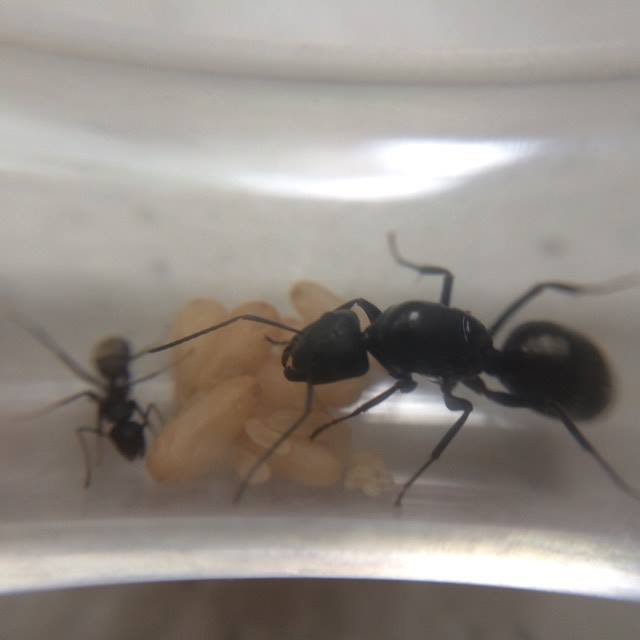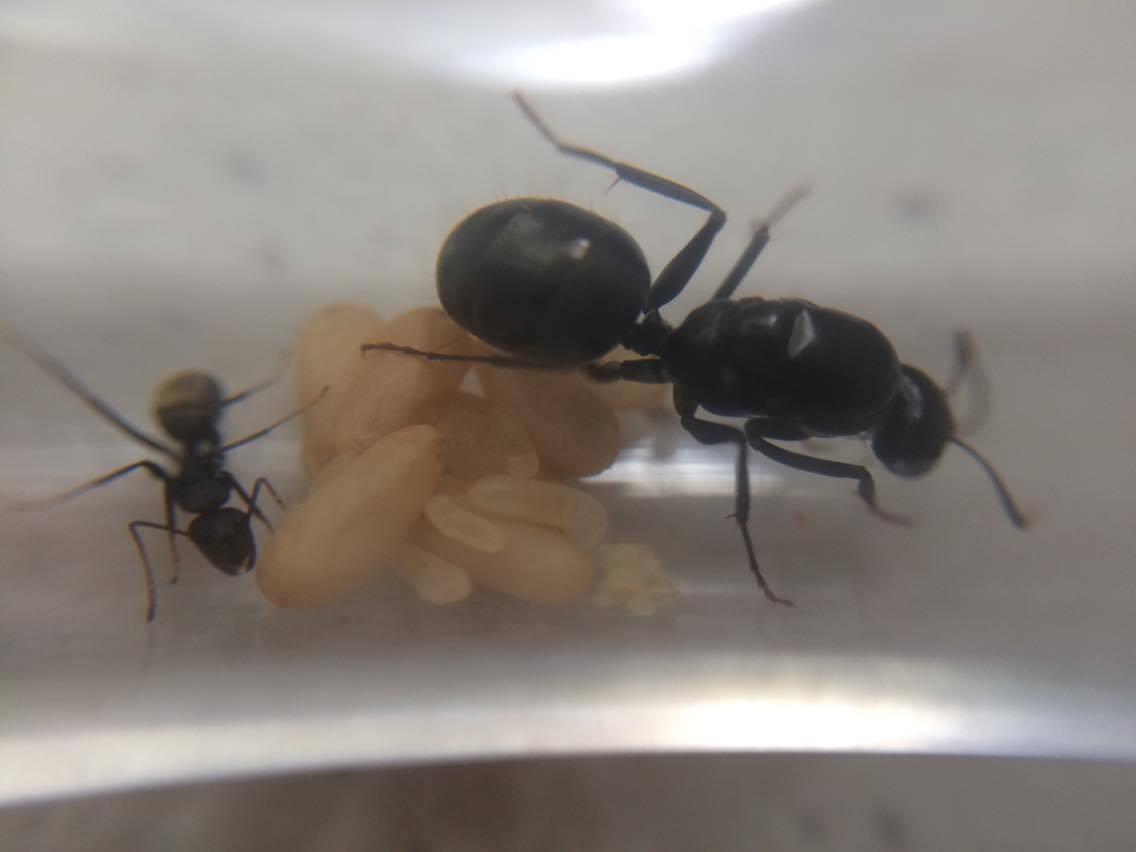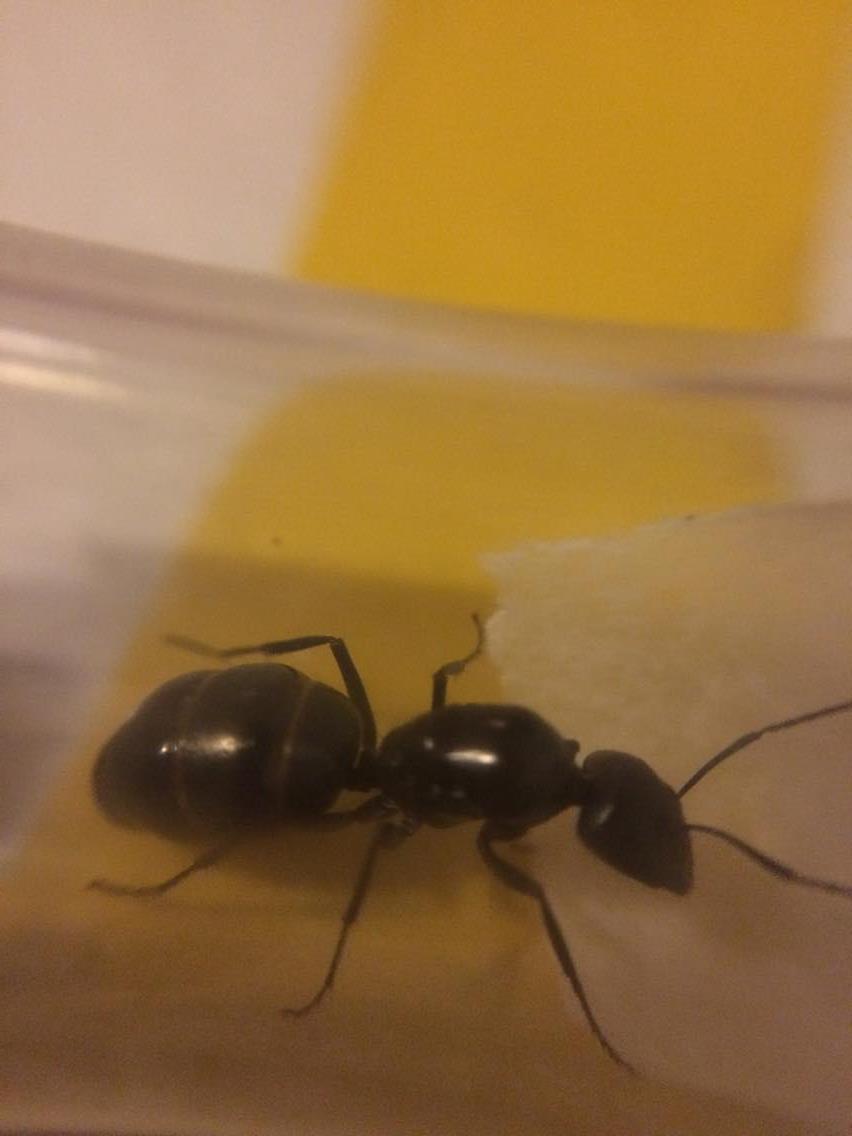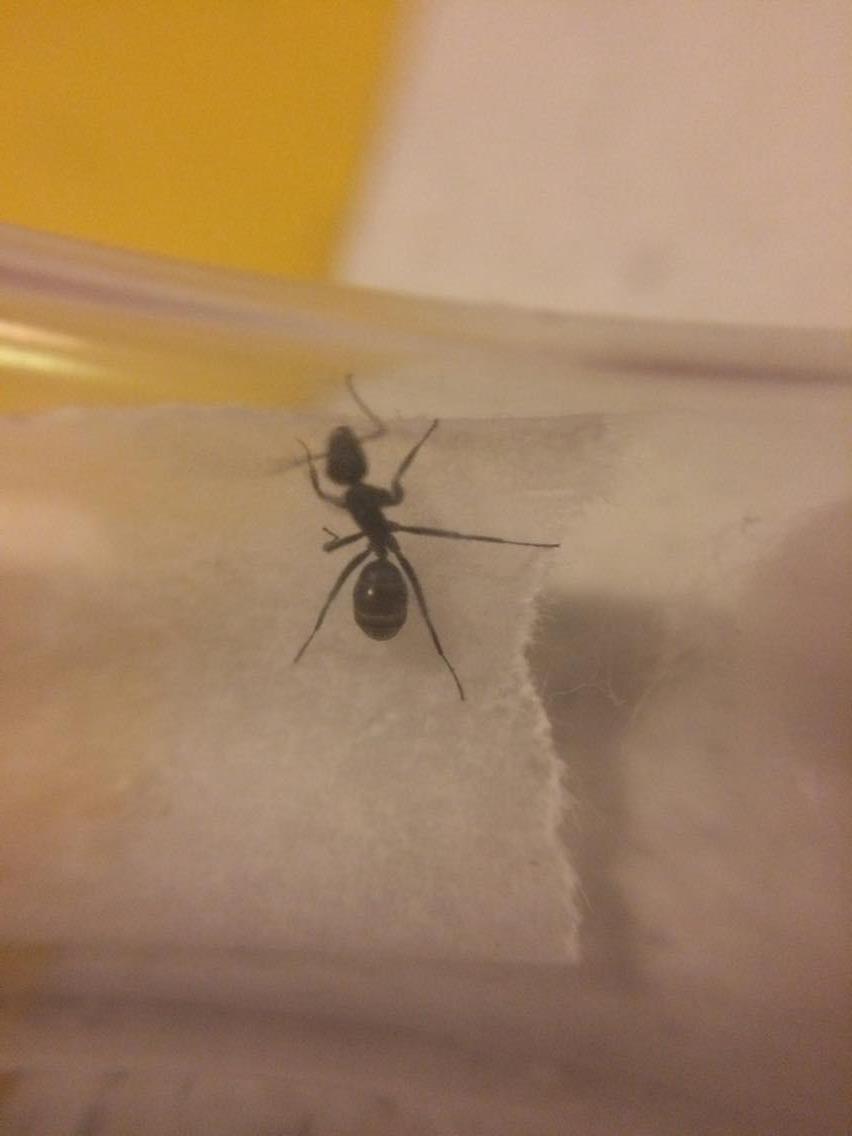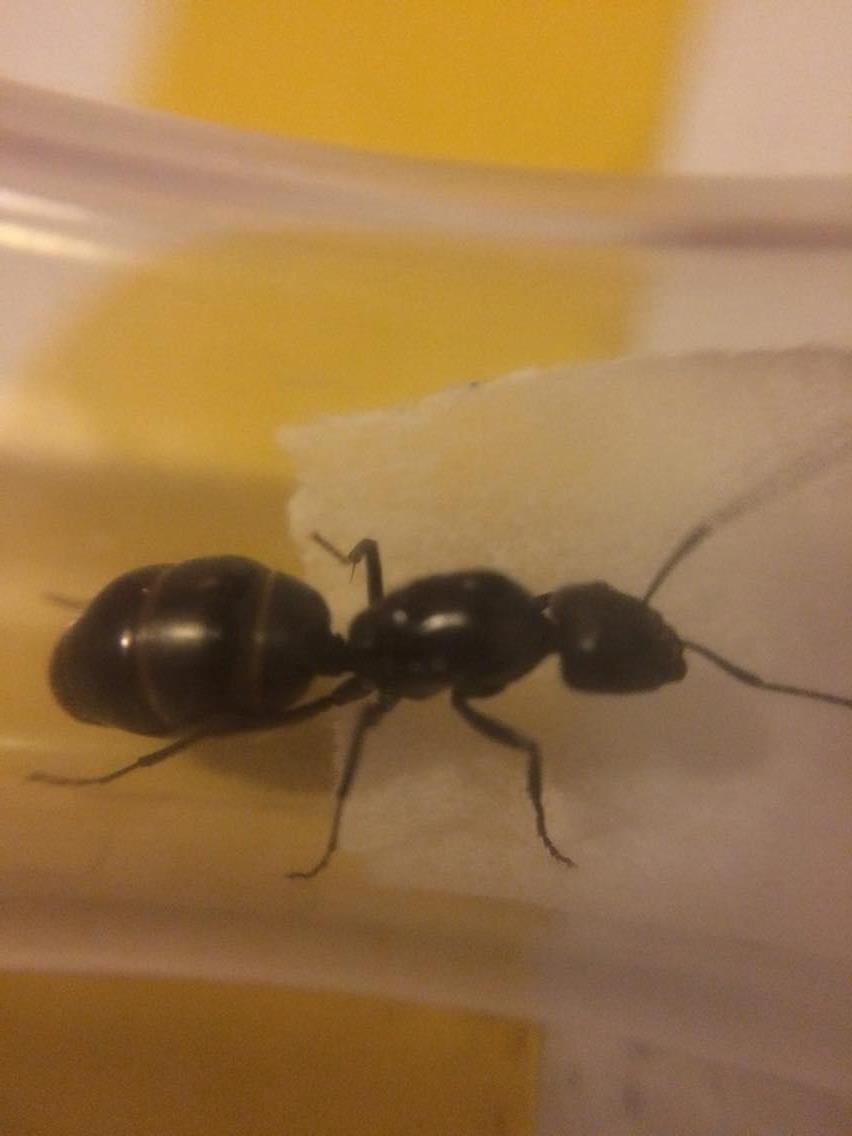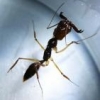Body:
1. Location of collection: suburban sidewalk
2. Date of collection: early December or Late November 2016 afternoon
3. Habitat of collection: somewhat forested area that ajoins a suburban area
4. Length : Queen : 13-14 mm , Nanitics : 6mm
5. Coloration: black
6. Distinguishing characteristics: relatively large head
7. Anything else distinctive : nanitics emerge from brown cocoons,
8. Nest description: Unknown
Other Comments:
Fairly certain based on the size and shape that it is camponotus but no clue on the species
